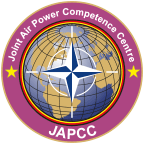Introduction
NATO has enthusiastically embraced the procurement of the F-35 Lighting II, and for good reason. The aircraft’s incredible capabilities contribute significantly towards deterring NATO’s security threats. However, with all the emphasis on the F-35, it is easy to forget that it will not be universally owned and operated throughout the Alliance. Instead, far more third- and fourth-generation fighters of multiple varieties will remain throughout NATO for the foreseeable future. Approximately 650 F-35s, procured by 14 NATO nations, will be in service on the European continent by 2030, which is 20% of the Alliance’s roughly 3,300 total fighter inventory.1,2 While the F-35’s arrival will greatly expand NATO’s deterrence posture and combat capability, the Alliance’s third- and fourth-generation fighters will remain the bulk of NATO’s fighter presence. This third-, fourth-, and fifth-generation mix reduces vulnerabilities to exploitation, enables fighter integration, provides mass and economy of force, and allows each nation to meaningfully contribute to the Alliance’s common defence. As NATO nations procure hundreds of fifth-generation aircraft, NATO must recognize the advantages of sustaining and modernizing its fleet of third- and fourth-generation fighters.
Variety Mitigates Vulnerabilities
No weapon system is perfect, and adversaries actively exploit imperfections to gain advantages on the battlefield. Defending against exploitation begins with proper design and continues with the correct application of defensive measures. One defensive measure NATO possesses organically is deliberately fielding multiple different types of fighters. By doing so, NATO presents a dilemma to adversaries forcing them to prioritize on which fighters to spend limited resources to develop countermeasures. Despite thorough security measures, at some point a breach of any given weapon system may occur, so Alliance members are wise to diversify their fighter fleet to minimize potential impacts to combat capability. Diversified fleets decrease the probability that the vulnerability in any given weapon system will be identified and exploited. In turn, this increases the odds the Alliance will be able to deter aggression and, if necessary, defend its territory. Admittedly, a greater number of fighter types will increase the probability that a fighter type is exploited, but it will decrease the impact of that exploitation in terms of overall combat capability; assuming the exploitation is limited to only one type.
In addition to risks from adversary actions, supply chain and platform risks are also important to consider. Fighters are complex machines made from many discreet and unique parts, each necessary for the full functioning of the aircraft. An internationally manufactured aeroplane, such as the F-35, is particularly vulnerable to supply chain interruptions. Given the prohibitive expense of carrying a large inventory of spare parts, nations are exposed to supply chain fragility. Even if the impact is limited to only one or two parts, the fleet, as a whole, can see negative impacts to mission capability rates if there is a disruption to the supply chain. While a diversified fighter portfolio has an overall increased reliance on logistics, the impact of supply chain interruption for any given part is reduced. Thus, diversification increases the collective mission capability of NATO’s fighter fleet as a whole. Platform risks, such as a safety stand down, can ground an entire fleet overnight. This issue may arise from the discovery of a defective batch of parts or an accident that exposes a previously unknown flaw, necessitating procedural or mechanical adjustments to guarantee flight safety. Due to the fact that parts from one type of fighter are rarely interchangeable with another type, having a diverse range of fighters helps to minimize risks for the Alliance.
Fighter Integration
Integrating multiple fighter generations creates an operating environment that maximizes each fighter’s strengths while minimizing its weaknesses. For example, a package of four F-35s and four Eurofighters creates a symbiotic relationship that renders each formation more lethal while simultaneously less vulnerable. First, the formation can prioritize using the fuel and weapons of the Eurofighters as much as possible, increasing the on-station time of the F-35s. Next, the F-35s are less likely to be detected because enemy radars are focused on the much larger radar signature of the Eurofighter formation. Further, the Eurofighters maintain increased situational awareness by communicating with the F-35 formation resulting in reduced chances of adversaries approaching the Eurofighters undetected. Finally, each fighter uses a different sensor suite, which mitigates the effects of battlespace jamming and other adversary actions in the electromagnetic spectrum. The results of multi-generation fighter integration, when executed properly, greatly increase the lethality of all formations while minimizing their vulnerabilities, resulting in greatly increased deadliness versus enemy aircraft.
Mass
While 650 F-35s on the European continent is a significant amount of firepower, they alone do not provide the necessary mass to ensure NATO security. NATO now possesses a 2,500 km border with Russia. By way of example, if all 650 F-35s could be airborne simultaneously, they would theoretically be spaced every 4 km, or 2 nm. Realistically, however, perhaps only 25% of the inventory could be airborne simultaneously, stretching the distance between each fighter to 16 km, or 8 nm. That leaves no defence in depth, and even a small break in that line of fighters could be disastrous for defended assets beyond. Alternatively, by massing the fifth-generation assets in sectors saturated with enemy area denial systems and utilizing third- and fourth-generation fighters to fill in the gaps, they can obtain a much denser and more layered defensive counter-air posture.
The ability to have more fighters airborne, supported with decoys, chaff, and electronic attack, saturates the airspace, creating tracking, engagement, and Weapons Resource Management (WRM) dilemmas for an adversary. Because all contacts could be a threat, adversaries are forced to engage as many as possible without necessarily knowing what fighter type they are targeting, or if the target is even a fighter at all. This can lead to expending tremendous weapons stocks for very little gain. Additionally, the ability to mass fighter forces allows commanders to offensively mass firepower against priority objectives, increasing the probability of achieving the desired effects. Massed firepower also reduces risk to the force package through increased mutual support, self-defence posture, and stand-in situational awareness.
Economy of Force
Economy of force seeks to appropriately allocate forces towards an objective, eliminate waste, minimize the risk to assets, and increase overall theatre lethality and efficiency. Using a 20 mm strafe to stop a freight train is futile; the weapon (20 mm) is not appropriately matched to the target (freight train). Conversely, attacking a mud hut with a 2,000 lb munition will certainly destroy the hut, but at excessive direct and opportunity cost, and with a significant increase in collateral damage potential. Similarly, fifth-generation fighters are enormously capable and can conduct many different mission sets; NATO must ask itself which missions fifth-generation fighters are best suited for, not which missions fifth-generation fighters can be used for.
Take, for example, Close Air Support (CAS) in a permissive environment-easily considered a lower-threat mission. An F-35 can certainly accomplish this, but its relatively small payload and high operating costs make it less well-suited than many other fourth-generation fighters, such as the Gripen or F-16, both of which carry more munitions at substantially lower cost. Therefore, it is better to utilize one of these fourth-generation fighters in the CAS mission than to expend unnecessary flying hours on F-35 airframes or to divert them from higher-threat missions where its inherent attributes are needed.
Also, consider the cost of losing an F-35 during such a routine mission; such a loss would be a windfall for the adversary by creating an enormous exploitation opportunity. Additionally, the loss of an F-35 to a routine mission represents an opportunity cost that cannot be ignored because it removes the possibility to use that jet on a high-end mission. Losing a third- or fourth-generation fighter on a routine mission is still agonizing, but not nearly as excruciating as losing an F-35 because the opportunity cost is not nearly as high. Conversely, using a fourth-generation fighter to penetrate overlapping surface-to-air missile sites, engage multiple adversary fighters, and deliver ordnance on multiple targets would create an extreme risk to force for an earlier generation aircraft. In this case, it is far better to use the more expensive flying hours of the fifth-generation fighters and expect the majority to survive rather than the cheaper flying hours of the fourth-generation fighters with a low survival rate. By maintaining a robust multi-generational fighter force, NATO gives itself a larger toolkit, allowing it optionality to pair the right jet to the right task, and in doing so, achieve economy of force.
All Nations’ Budgets Contribute
Since the F-35’s acquisition and operating costs are significantly higher than fourth-generation fighters, each member nation can contribute to the multi-generational fighter composition of the Alliance based on their diverse national requirements and capabilities. This diversity manifests in many ways, but one important variation is in the defence budgets among member states, whose Gross Domestic Products (GDP) vary from $7.4B (Montenegro) to $27.3T (USA).3,4 It is, therefore, not fiscally possible for all nations to field similar forces. Instead, NATO defines its overall requirements and nations elect to fulfil those requirements according to their available funds and national interests. In this way, while nations with larger economies may procure expensive equipment such as F-35s, those nations with smaller GDPs can still meaningfully contribute to the Alliance by sustaining, modernizing, and adding to their third- and fourth-generation fighter fleets. No contribution is too big, and no contribution is too small; NATO’s only firm requirement is that each nation spends at least 2% of its GDP on defence.5
Conclusion
The F-35 represents an enormous gain in capability for NATO; however, for reasons of diversity, fighter integration, mass, economy of force, and budgetary constraints, it is unrealistic and undesirable to replace all legacy fighters. Logically, NATO is unable to procure one-for-one replacements, Alliance-wide, of all legacy fighters – nor should it want to. The risk reduction of a mixed fighter fleet more than justifies multiple different types of fighters. Further, NATO needs its existing legacy fighters to achieve the appropriate levels of mass and economy of force. Finally, the beauty of NATO is that nations can contribute broadly toward the Alliance, and members with smaller defence budgets can contribute in a tangible way by procuring and modernizing existing fourth-generation fighter platforms. By employing the combination of third-, fourth-, and fifth-generation fighters, NATO will maximize its capability to deter aggression and, if necessary, defeat any threat to NATO territory. In this way, NATO leverages its inherent strengths and mitigates its weaknesses when it utilizes an integrated, multi-generational fighter fleet.











